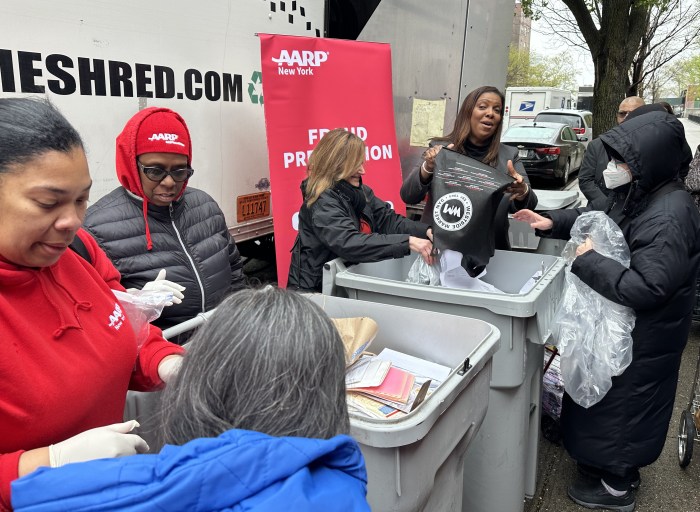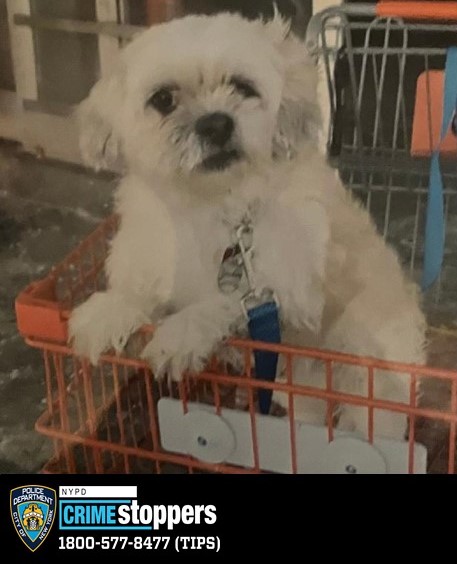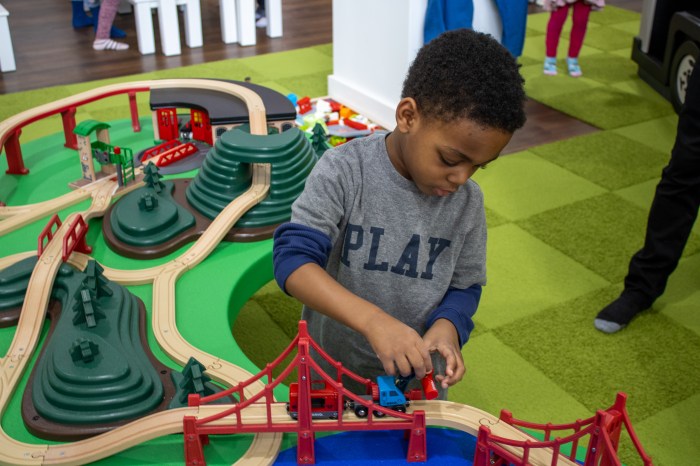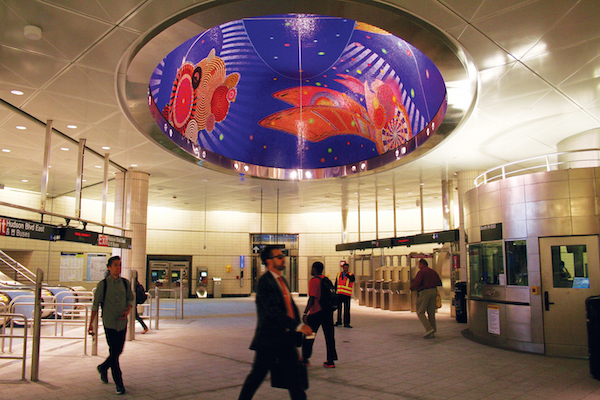
PHOTOS & REPORTING BY YANNIC RACK | In a glimpse of what’s to come for Manhattan’s far West Side, trains started rolling this weekend into the city’s first new subway station in a quarter-century.
An extension of the No. 7 line, 34 St–Hudson Yards (the city’s 469th station), was unveiled at a ribbon-cutting ceremony on Sunday morning by Mayor Bill de Blasio as well as state, city, and local officials.
Speaking in front of the new station entrance at W. 34th St. near 11th Ave., the mayor called the opening a “monumental day” for the city, one that had been a long time coming, but was worth the wait.
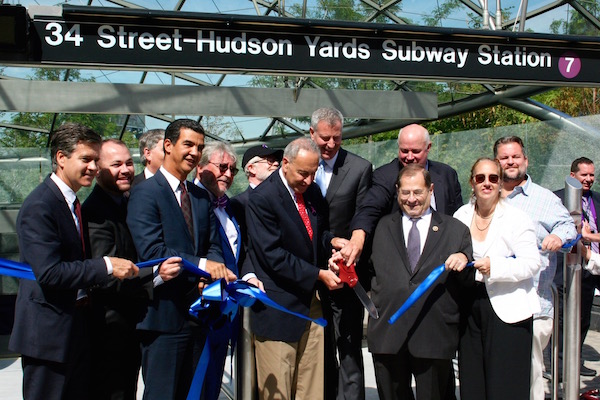
“This extension connects this extraordinary development happening here — a whole new city being created within our city — connects it with thousands of jobs in neighborhoods like Flushing and in central Queens, bringing people from those neighborhoods to the jobs here,” de Blasio said, before descending the escalators to take the inaugural ride to Times Square–42 St. and back again.
“The days of the Wild West Side are over, the days of the West Side renaissance are in full swing,” said US Senator Charles Schumer — and indeed the signs of progress were all around.
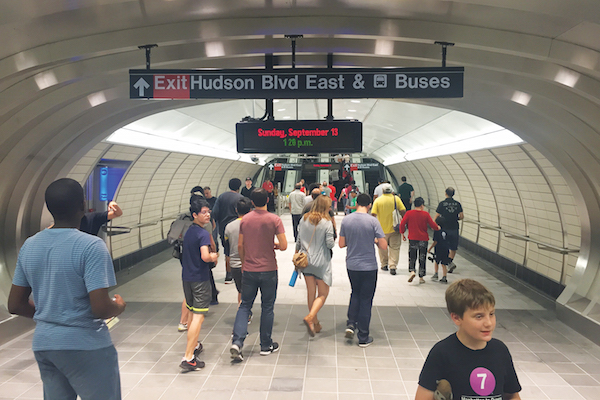
Across the street, cranes dotted the sky where the first towers of the Hudson Yards development are rising up, and the official opening of the Hudson Park and Boulevard provided a second cause for celebration that day.
The $2.4 billion extension, which now carries subway riders 1.5 miles closer to the river, makes the No. 7 the only subway line south of W. 66th St. to provide service to the transit-starved far West Side. The city estimates that it will become the busiest station in the whole system, serving up to 56,000 people every day by 2025.
And it will not only be the main access point to Hudson Yards once the development is completed over the next decade, but already delivers visitors to the High Line and the recently renovated Jacob K. Javits Convention Center, as well as the new park.
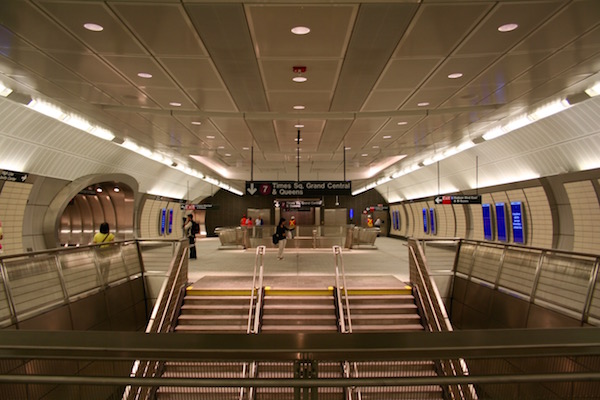
“It was a big investment, and it will have a big impact,” Mayor de Blasio said.
His predecessor, Michael Bloomberg, took a ceremonial ride to the station way back in 2013, during his final weeks as mayor, but many locals and commuters to the area have been waiting for much longer.
The extension has been under construction for the past eight years, its opening repeatedly delayed because of problems with its two incline elevators, the first in the New York City Transit system.
Some riders also lamented the loss of a second station at 10th Ave. and W. 41st St., which was dropped from the plans in 2007 due to cost overruns. The MTA had indicated that the second stop might be included in the 7 extension project, if funding were found.
But those past frustrations were quickly forgotten on Sunday.
The anticipation was visible on the sidewalk of W. 34th St., where some local families and subway enthusiasts from across the city had been waiting for hours to finally be allowed into the brand-new station.
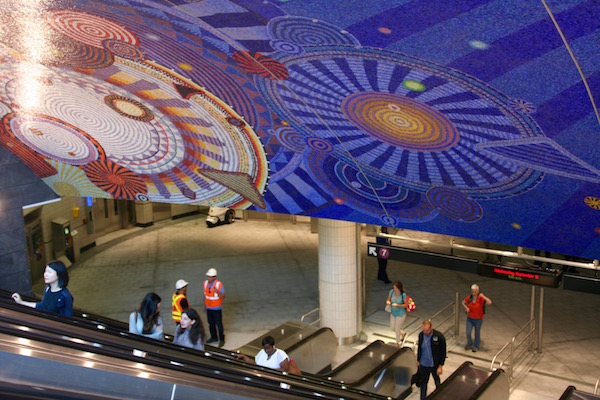
Once the first public train pulled in shortly after 1 p.m., hundreds swarmed into the station, eagerly posing for selfies and marveling at the colorful mosaics on the ceiling and the countless other amenities, which include the two inclined elevators reaching down roughly seven stories, or 82 feet, from the upper to the lower mezzanines.
“We were waiting outside for like, thirty minutes, and now we’re loving it,” said Wanda Salas, who is a tour guide in the city and brought along her mother and a small group of tourists visiting from Argentina.
“It’s beautiful, I love that it’s so fresh, it’s not hot at all,” she added, beaming with excitement. “That’s the first thing I notice as a New Yorker.”
The station has air-conditioning on the platform level (the MTA promises a year-round temperature between 72 and 78 degrees) and sports the longest column-free platform, as well as the highest and longest escalators inside any subway station in the city.
To reach the platform, riders are transported 125 feet below street level, which led some visitors on Sunday to remark on the long trip down the escalators.
Because tracks were built as far south as W. 25th St., there is also more space to store and turn around trains, which is supposed to improve service for all No. 7 riders.
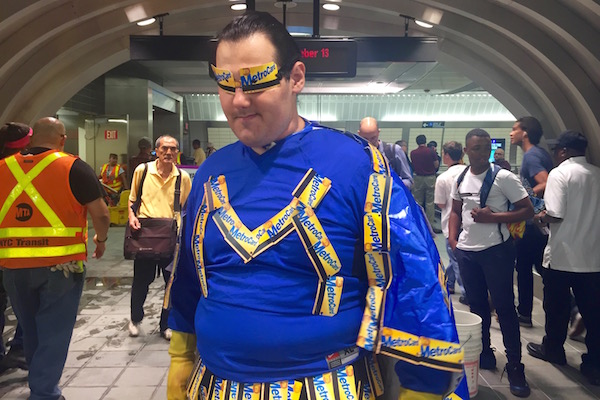
“It feels great, but it was very crowded,” said Emil, who had taken the first train into the station with two friends, self-described transit enthusiasts who volunteer at the New York Transit Museum.
“It’s very large. It looks like it could handle a lot of people,” said Max, nonetheless noting some aspects that seemed to require improvement, like a pool of water in one corner and a partly unfinished exit.
“It’s not every day that a new subway station in New York opens up,” he quickly added. The occasion was, in fact, a historic moment for the city (the last addition to the system was made in 1989).
The new stop is also the first time in over 60 years that the city has paid for a subway extension. Although the mood on Sunday was mostly celebratory, both officials and subway riders brought up the issue of financing, with many asking for more participation from the city.
“It’s beautiful, it’s very bright and airy,” said Steve Salee, who visited the station with his eight-year-old son, Aaron. “It’s amazing what happens when the city of New York contributes to the cost of transit infrastructure in its own city. It’s good for New York to help to pay for these things. You can see it.”
The mayor has thus far ignored calls for the city to finance a bigger share of the state-run MTA, and some tensions were on display at the press conference.
In his speech, Thomas Prendergast, the authority’s chairman, mentioned the need for the city to close the gap in the MTA’s five-year capital program to “respond to the growth” of the city.
“All of this is possible because the city of New York fully funded this project. And that happened today because Mike Bloomberg, who couldn’t be with us today, saw the needs and the possibilities and partnered with the MTA and New York State to make this critical expansion of our system possible,” he said.
The administration of former mayor Michael Bloomberg agreed that the city would pay for the project as part of its effort to develop the Hudson Yards site.
The mixed-use project, which will eventually house 40,000 residents and workers every day, forms the core of a cascade of redevelopment in the area, which began in 2005, when the City Council approved the large-scale rezoning of the far West Side.
After the city lost its bid for the 2012 Summer Olympics, plans for a West Side Stadium for the New York Jets were scrapped, and now Hudson Yards is being built atop the MTA’s John D. Caemmerer rail yards instead.
“What arose from the ashes [of the stadium] was a very carefully planned development for Hudson Yards,” Councilmember Corey Johnson said on Sunday.
“And as part of that, because we were not going to get enough open space over on the Eastern and Western Rail Yards, the community board fought really hard to ensure that there was going to be ample open space for the concentration of people and buildings that are going to be on the far West Side.”
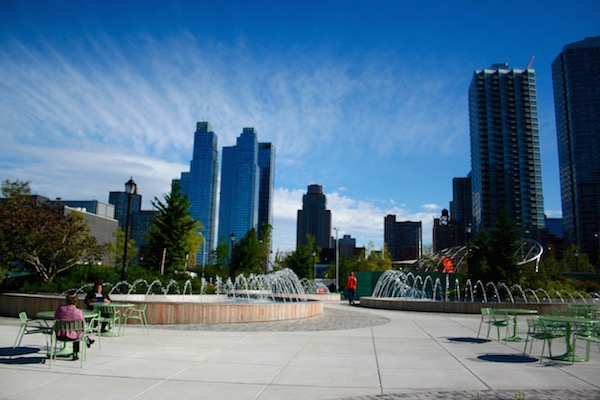
The new subway station now sits right in the middle of the new Hudson Park, or more exactly its southernmost block (btw. W. 33rd & W. 34th Sts. and 10th & 11th Aves.), one of three that stretch all the way to W. 36th St.
The other two sections, which boast fountains, sitting areas, a playground and a kiosk, quietly opened to the public last month. But local officials and the Hudson Yards / Hell’s Kitchen Alliance, the business improvement district that will manage and maintain the park, ceremoniously unveiled them on Sunday.
“They say fences make good neighbors. Well, in New York City, parks make good neighbors,” said State Senator Brad Hoylman, who attended the opening along with a host of other officials after taking the inaugural train ride to Times Square.
“This really is a nice park,” added State Assemblymember Richard Gottfried. “This just shows that when the city works with the community — not every community, but certainly this community — it turns out a whole lot better.”
In time, as the rest of the neighborhood is transformed, three more blocks of the park, reaching north to W. 39th St. and the entrance of the Lincoln Tunnel, will open as well — although the first of them, block four, is not expected to be completed until 2017.
“Today is just a taste of what will come,” said Kevin Singleton, the chairman of the Hudson Yards / Hell’s Kitchen Alliance.
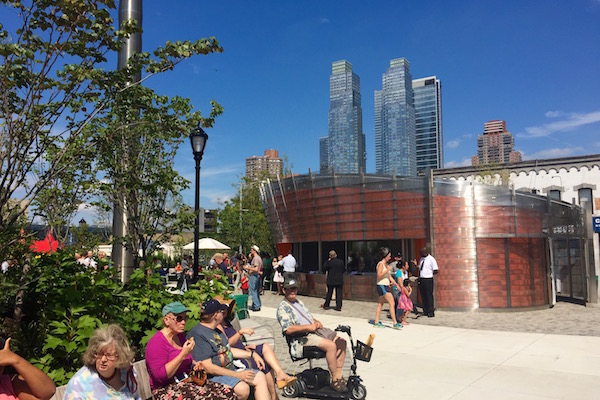
On Sunday, the park was already filled with visitors young and old, who strolled along the fountains in the sunshine and listened to live music, while children climbed bouncy castles and had a blast on the playground and at a face-painting station.
The elliptical orange kiosk was in business for the day, serving sandwiches and lemonade, although it is still partly under construction and won’t be open regularly until the spring.
“I absolutely love it. It’s of the same quality as the High Line and the Hudson River Park. I’m glad I don’t have to go all the way to the river now to see these beautiful fountains and have some greenery,” said Robert Marchesani, sitting on a bench in the park’s northernmost block.
“I often felt we have too much concrete and steel in this neighborhood, since I moved here after 9/11, so this is like a dream come true.”
Marchesani said he lives just down the street, and also has his private psychotherapy practice in the neighborhood, which makes both the park and the subway station a welcome addition.
“I couldn’t wait until they started transforming this whole area,” he said.










